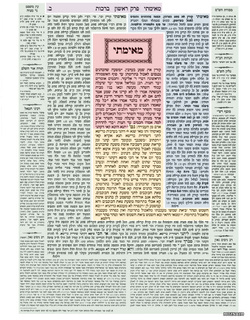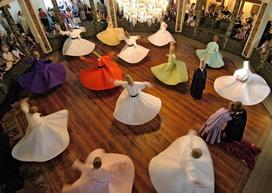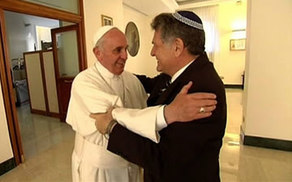
It seems that study of the Talmud is growing in popularity even among women who traditionally have not been allowed to read it. When someone asked Einstein, shortly before his death, what he would do differently if he could live his life again, it seems he said: "I would study the Talmud."
The Talmud is a practical book that tells Jews how to live but its beauty for me is that it contains a variety of opinions and encourages debate and conversation. As you can see from this page of the Talmud the central text is surrounded by different elaborations. It contains official opinions but also minority opinions, agreements and disagreements, even folk lore and jokes. It's the disagreements that interest me. To have a variety of opinions about how to live and the best way to understand faith is very healthy. And to discuss these is even healthier. Too often religious authorities seem to fear disagreement and makes authoritative statements which come down on the side of an opinion, making it orthodox and all other opinions unorthodox. Disagreement with these views is taken as dissent, seen as heretical and the individual to be rejected unless he or she follows the party line. This has led to witch hunts, heresy trials, violence and even wars.
I heard a nice story this evening about a debate between Jesuits and Dominicans in the 16th/17th century. It was about the right understanding of grace and lasted 23 years. Prolonged debates took place before Popes until it was eventually resolved by Pope Paul V who declared both orders could teach their own understanding of grace as long as they didn't call the other heretical. I think the Pope intended to get round to resolving the issue later but never did so.
Seems there is a good lesson here for all religions, one that Judaism has taken to heart. To be aware that we are all limited in our views, that a point of view is a view from a particular point and to consider that there could be wisdom in another view can only be enriching for the development of our faith. Such openness within any one faith must help openness to other faiths.






 RSS Feed
RSS Feed
